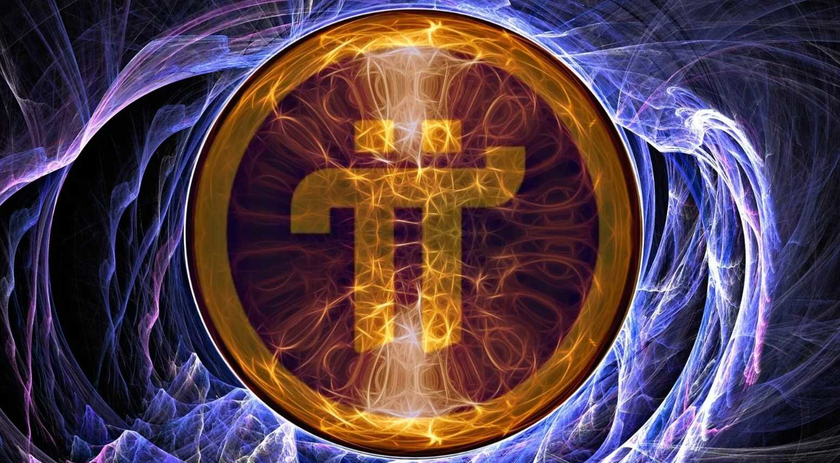Pi Network has been a contentious subject in the cryptocurrency community since 2019. Despite facing opposition from numerous crypto enthusiasts, it remains one of the largest and most active crypto projects.
For those who are interested in Pi Network due to its recent popularity, this guide will provide you with comprehensive information about the project. We will address critical inquiries such as the legitimacy of the Pi coin, its functionality, and potential price projections.
What Exactly Is The Pi Network?
Pi Network is a crypto project currently in the developmental stage and not yet a fully established currency. The team behind Pi Network is focused on building a robust community that will eventually launch the Pi digital currency, which could occur in several months or years.
The Pi Network was founded and launched in 2019 by a group of Stanford students, Nicolas Kokkalis, Chengdiao Fan, and Vince McPhilip on the Stellar Network. The network enables users to mine PI cryptocurrency coins using mobile phone and desktop applications, which validate transactions on the Stellar Networks distributed ledger. The Pi white paper outlines their primary objective of fixing bitcoin mining's flaws and making cryptocurrency accessible to everyone.
Users mine Pi coins by using the Pi Network app, which requires them to press a button on their phone every 24 hours to verify they are not a robot. At present, Pi mining is not technically crypto mining since no transaction verification is taking place.
To join the Pi Network, you can use my invitation code(TheDinarian). The referral system enables users to earn additional coins based on the number of people who register using their invitation code.
According to the Pi Network whitepaper, the Pi coin will not be available for public use until phase 3 of the project when the Pi Network mainnet launches. However, the developers have not provided any details on when this phase will occur.
How Does It Work?
Pi Network operates by assigning users different roles as they mine Pi coins. Users begin as Pioneers and progress to the Contributor role once they declare five or more trusted connections. If at least 23 Pioneers join the network using their referral code, they become Ambassadors. Additionally, users who run Pi software on their PCs become Nodes.
However, Pi nodes operate differently than those on other networks like Bitcoin, which use proof-of-work (PoW) protocols. Pi nodes utilize an algorithm based on the Stellar Consensus Protocol (SCP) to reach consensus on the order in which new transactions should be recorded on a distributed ledger and validate them.
Similar to Bitcoin and other cryptocurrencies, Pi undergoes regular halving to maintain its scarcity. Halving refers to the process of reducing the number of coins a miner receives for processing new transactions by half. Pi's mining rate halved from 1.6 π to 0.8 π per hour after it reached 100,000 users. It halved again to 0.4 π per hour when it reached one million users and then halved to 0.2 π when it reached ten million users. The rewards will continue to halve until they reach zero once the network hits one billion users.
Many people believe that predicting the future value of the Pi coin is impossible as the coin has not been launched yet. Several websites have given inaccurate price estimates based on outdated data. However, it is certain that the initial price of the Pi coin will be very High, similar to other cryptocurrencies at their launch. As more people start trading the coins and the number of platforms and users accepting it grows, the price could become very volatile.
Predictions for the Pi coin between 2023 and 2025 are speculative, and monitoring prices over a longer period may be the best approach. Until the Pi coin is released, it is a hope that it will be another successful cryptocurrency that can be traded for profit. It's important to note that Pi Network's coin is different from the Pi Network DeFi token, which is available for trading on the PancakeSwap decentralized exchange and runs on the Binance blockchain.
There is currently a PI/USDT Trading pair on XT.COM. These are NOT actual PI coins, but an IOU version similar to what the Bitrue Exchange did with Flare. The current price of 1 PI IOU is trading at $2.18 at the time of this writing. This would most likely set the coins launch price once mainnet goes live. Those hodling PI coins at that time would be able to sell their coins on the open markets at that point, or keep hodling for a higher price range. This would be entirely up to the token holder.
Prior to engaging in trading, it is crucial to conduct your own thorough research by keeping up with the latest news, conducting fundamental and technical analysis, and most importantly, educating yourself by taking cryptocurrency courses to enhance your understanding.
It is important to bear in mind that a coin's past performance is not a reliable predictor of future outcomes. Additionally, it is critical to never trade with funds that you cannot afford to lose.
In conclusion, the future of Pi coin remains uncertain until it is traded on the open market once mainnet launches, and actual coins are being traded. It is important to exercise caution and avoid making investment decisions based on inaccurate price predictions. While there is a chance that Pi coin could be a washout, it is also possible that it could be a legitimate cryptocurrency that gains widespread popularity. Only time will tell. Nonetheless, the Pi Network has already achieved widespread adoption in certain countries such as Vietnam, where the Pi Browser app has become a popular download on both the Apple App Store and Google Play.
Ready To Mine Your Own PI?
Let me help you get started, I am sending you 1π! To claim your Pi, follow this link and use my username (thedinarian) as your invitation code. Welcome to Team Dinarian!

































